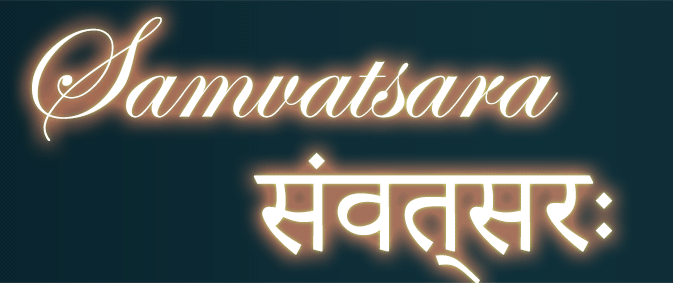Warning: Undefined variable $symbol3 in
/home2/puranja1/public_html/wp-content/plugins/premium-addons-for-elementor/includes/pa-display-conditions/mobile-detector.php on line
1
Warning: Undefined variable $symbol1 in
/home2/puranja1/public_html/wp-content/plugins/premium-addons-for-elementor/includes/pa-display-conditions/mobile-detector.php on line
1
Warning: Undefined variable $symbol3 in
/home2/puranja1/public_html/wp-content/plugins/premium-addons-for-elementor/includes/pa-display-conditions/mobile-detector.php on line
1
Warning: Undefined variable $symbol3 in
/home2/puranja1/public_html/wp-content/plugins/premium-addons-for-elementor/includes/pa-display-conditions/mobile-detector.php on line
1
Warning: Undefined variable $symbol5 in
/home2/puranja1/public_html/wp-content/plugins/premium-addons-for-elementor/includes/pa-display-conditions/mobile-detector.php on line
1
Warning: Undefined variable $symbol5 in
/home2/puranja1/public_html/wp-content/plugins/premium-addons-for-elementor/includes/pa-display-conditions/mobile-detector.php on line
1
Warning: Undefined variable $symbol7 in
/home2/puranja1/public_html/wp-content/plugins/premium-addons-for-elementor/includes/pa-display-conditions/mobile-detector.php on line
1
Warning: Undefined variable $symbol11 in
/home2/puranja1/public_html/wp-content/plugins/premium-addons-for-elementor/includes/pa-display-conditions/mobile-detector.php on line
1
Warning: Undefined variable $symbol5 in
/home2/puranja1/public_html/wp-content/plugins/premium-addons-for-elementor/includes/pa-display-conditions/mobile-detector.php on line
1
Warning: Undefined variable $symbol3 in
/home2/puranja1/public_html/wp-content/plugins/premium-addons-for-elementor/includes/pa-display-conditions/mobile-detector.php on line
1
Warning: Undefined variable $symbol6 in
/home2/puranja1/public_html/wp-content/plugins/premium-addons-for-elementor/includes/pa-display-conditions/mobile-detector.php on line
1
Warning: Undefined variable $symbol4 in
/home2/puranja1/public_html/wp-content/plugins/premium-addons-for-elementor/includes/pa-display-conditions/mobile-detector.php on line
1
Warning: Undefined variable $symbol11 in
/home2/puranja1/public_html/wp-content/plugins/premium-addons-for-elementor/includes/pa-display-conditions/mobile-detector.php on line
1
Warning: Undefined variable $symbol1 in
/home2/puranja1/public_html/wp-content/plugins/premium-addons-for-elementor/includes/pa-display-conditions/mobile-detector.php on line
1
Warning: Undefined variable $symbol5 in
/home2/puranja1/public_html/wp-content/plugins/premium-addons-for-elementor/includes/pa-display-conditions/mobile-detector.php on line
1
Warning: Undefined variable $symbol11 in
/home2/puranja1/public_html/wp-content/plugins/premium-addons-for-elementor/includes/pa-display-conditions/mobile-detector.php on line
1
Warning: Undefined variable $symbol5 in
/home2/puranja1/public_html/wp-content/plugins/premium-addons-for-elementor/includes/pa-display-conditions/mobile-detector.php on line
1
Warning: Undefined variable $symbol10 in
/home2/puranja1/public_html/wp-content/plugins/premium-addons-for-elementor/includes/pa-display-conditions/mobile-detector.php on line
1
Warning: Undefined variable $symbol3 in
/home2/puranja1/public_html/wp-content/plugins/premium-addons-for-elementor/includes/pa-display-conditions/mobile-detector.php on line
1
Warning: Undefined variable $symbol5 in
/home2/puranja1/public_html/wp-content/plugins/premium-addons-for-elementor/includes/pa-display-conditions/mobile-detector.php on line
1
Warning: Undefined variable $symbol10 in
/home2/puranja1/public_html/wp-content/plugins/premium-addons-for-elementor/includes/pa-display-conditions/mobile-detector.php on line
1
Warning: Undefined variable $symbol3 in
/home2/puranja1/public_html/wp-content/plugins/premium-addons-for-elementor/includes/pa-display-conditions/mobile-detector.php on line
1
Warning: Undefined variable $symbol1 in
/home2/puranja1/public_html/wp-content/plugins/premium-addons-for-elementor/includes/pa-display-conditions/mobile-detector.php on line
1
Warning: Undefined variable $symbol12 in
/home2/puranja1/public_html/wp-content/plugins/premium-addons-for-elementor/includes/pa-display-conditions/mobile-detector.php on line
1
Warning: Undefined variable $symbol5 in
/home2/puranja1/public_html/wp-content/plugins/premium-addons-for-elementor/includes/pa-display-conditions/mobile-detector.php on line
1
Warning: Undefined variable $symbol3 in
/home2/puranja1/public_html/wp-content/plugins/premium-addons-for-elementor/includes/pa-display-conditions/mobile-detector.php on line
1
Warning: Undefined variable $symbol3 in
/home2/puranja1/public_html/wp-content/plugins/premium-addons-for-elementor/includes/pa-display-conditions/mobile-detector.php on line
1
Warning: Undefined variable $symbol3 in
/home2/puranja1/public_html/wp-content/plugins/premium-addons-for-elementor/includes/pa-display-conditions/mobile-detector.php on line
1
Warning: Undefined variable $symbol13 in
/home2/puranja1/public_html/wp-content/plugins/premium-addons-for-elementor/includes/pa-display-conditions/mobile-detector.php on line
1
Warning: Undefined variable $symbol3 in
/home2/puranja1/public_html/wp-content/plugins/premium-addons-for-elementor/includes/pa-display-conditions/mobile-detector.php on line
1
Warning: Undefined variable $symbol5 in
/home2/puranja1/public_html/wp-content/plugins/premium-addons-for-elementor/includes/pa-display-conditions/mobile-detector.php on line
1
Warning: Undefined variable $symbol5 in
/home2/puranja1/public_html/wp-content/plugins/premium-addons-for-elementor/includes/pa-display-conditions/mobile-detector.php on line
1
Warning: Undefined variable $symbol1 in
/home2/puranja1/public_html/wp-content/plugins/premium-addons-for-elementor/includes/pa-display-conditions/mobile-detector.php on line
1
Warning: Undefined variable $symbol5 in
/home2/puranja1/public_html/wp-content/plugins/premium-addons-for-elementor/includes/pa-display-conditions/mobile-detector.php on line
1
Warning: Undefined variable $symbol11 in
/home2/puranja1/public_html/wp-content/plugins/premium-addons-for-elementor/includes/pa-display-conditions/mobile-detector.php on line
1
Warning: Undefined variable $symbol5 in
/home2/puranja1/public_html/wp-content/plugins/premium-addons-for-elementor/includes/pa-display-conditions/mobile-detector.php on line
1
Warning: Undefined variable $symbol3 in
/home2/puranja1/public_html/wp-content/plugins/premium-addons-for-elementor/includes/pa-display-conditions/mobile-detector.php on line
1
Warning: Undefined variable $symbol5 in
/home2/puranja1/public_html/wp-content/plugins/premium-addons-for-elementor/includes/pa-display-conditions/mobile-detector.php on line
1
Warning: Undefined variable $symbol2 in
/home2/puranja1/public_html/wp-content/plugins/premium-addons-for-elementor/includes/pa-display-conditions/mobile-detector.php on line
1
Warning: Undefined variable $symbol3 in
/home2/puranja1/public_html/wp-content/plugins/premium-addons-for-elementor/includes/pa-display-conditions/mobile-detector.php on line
1
Warning: Undefined variable $symbol13 in
/home2/puranja1/public_html/wp-content/plugins/premium-addons-for-elementor/includes/pa-display-conditions/mobile-detector.php on line
1
Warning: Undefined variable $symbol3 in
/home2/puranja1/public_html/wp-content/plugins/premium-addons-for-elementor/includes/pa-display-conditions/mobile-detector.php on line
1
Warning: Undefined variable $symbol2 in
/home2/puranja1/public_html/wp-content/plugins/premium-addons-for-elementor/includes/pa-display-conditions/mobile-detector.php on line
1
Warning: Undefined variable $symbol3 in
/home2/puranja1/public_html/wp-content/plugins/premium-addons-for-elementor/includes/pa-display-conditions/mobile-detector.php on line
1
Warning: Undefined variable $symbol1 in
/home2/puranja1/public_html/wp-content/plugins/premium-addons-for-elementor/includes/pa-display-conditions/mobile-detector.php on line
1
Warning: Undefined variable $symbol3 in
/home2/puranja1/public_html/wp-content/plugins/premium-addons-for-elementor/includes/pa-display-conditions/mobile-detector.php on line
1
Warning: Undefined variable $symbol3 in
/home2/puranja1/public_html/wp-content/plugins/premium-addons-for-elementor/includes/pa-display-conditions/mobile-detector.php on line
1
Warning: Undefined variable $symbol5 in
/home2/puranja1/public_html/wp-content/plugins/premium-addons-for-elementor/includes/pa-display-conditions/mobile-detector.php on line
1
Warning: Undefined variable $symbol5 in
/home2/puranja1/public_html/wp-content/plugins/premium-addons-for-elementor/includes/pa-display-conditions/mobile-detector.php on line
1
Warning: Undefined variable $symbol7 in
/home2/puranja1/public_html/wp-content/plugins/premium-addons-for-elementor/includes/pa-display-conditions/mobile-detector.php on line
1
Warning: Undefined variable $symbol11 in
/home2/puranja1/public_html/wp-content/plugins/premium-addons-for-elementor/includes/pa-display-conditions/mobile-detector.php on line
1
Warning: Undefined variable $symbol5 in
/home2/puranja1/public_html/wp-content/plugins/premium-addons-for-elementor/includes/pa-display-conditions/mobile-detector.php on line
1
Warning: Undefined variable $symbol3 in
/home2/puranja1/public_html/wp-content/plugins/premium-addons-for-elementor/includes/pa-display-conditions/mobile-detector.php on line
1
Warning: Undefined variable $symbol6 in
/home2/puranja1/public_html/wp-content/plugins/premium-addons-for-elementor/includes/pa-display-conditions/mobile-detector.php on line
1
Warning: Undefined variable $symbol4 in
/home2/puranja1/public_html/wp-content/plugins/premium-addons-for-elementor/includes/pa-display-conditions/mobile-detector.php on line
1
Warning: Undefined variable $symbol11 in
/home2/puranja1/public_html/wp-content/plugins/premium-addons-for-elementor/includes/pa-display-conditions/mobile-detector.php on line
1
Warning: Undefined variable $symbol1 in
/home2/puranja1/public_html/wp-content/plugins/premium-addons-for-elementor/includes/pa-display-conditions/mobile-detector.php on line
1
Warning: Undefined variable $symbol5 in
/home2/puranja1/public_html/wp-content/plugins/premium-addons-for-elementor/includes/pa-display-conditions/mobile-detector.php on line
1
Warning: Undefined variable $symbol11 in
/home2/puranja1/public_html/wp-content/plugins/premium-addons-for-elementor/includes/pa-display-conditions/mobile-detector.php on line
1
Warning: Undefined variable $symbol5 in
/home2/puranja1/public_html/wp-content/plugins/premium-addons-for-elementor/includes/pa-display-conditions/mobile-detector.php on line
1
Warning: Undefined variable $symbol10 in
/home2/puranja1/public_html/wp-content/plugins/premium-addons-for-elementor/includes/pa-display-conditions/mobile-detector.php on line
1
Warning: Undefined variable $symbol3 in
/home2/puranja1/public_html/wp-content/plugins/premium-addons-for-elementor/includes/pa-display-conditions/mobile-detector.php on line
1
Warning: Undefined variable $symbol5 in
/home2/puranja1/public_html/wp-content/plugins/premium-addons-for-elementor/includes/pa-display-conditions/mobile-detector.php on line
1
Warning: Undefined variable $symbol10 in
/home2/puranja1/public_html/wp-content/plugins/premium-addons-for-elementor/includes/pa-display-conditions/mobile-detector.php on line
1
Warning: Undefined variable $symbol3 in
/home2/puranja1/public_html/wp-content/plugins/premium-addons-for-elementor/includes/pa-display-conditions/mobile-detector.php on line
1
Warning: Undefined variable $symbol1 in
/home2/puranja1/public_html/wp-content/plugins/premium-addons-for-elementor/includes/pa-display-conditions/mobile-detector.php on line
1
Warning: Undefined variable $symbol12 in
/home2/puranja1/public_html/wp-content/plugins/premium-addons-for-elementor/includes/pa-display-conditions/mobile-detector.php on line
1
Warning: Undefined variable $symbol5 in
/home2/puranja1/public_html/wp-content/plugins/premium-addons-for-elementor/includes/pa-display-conditions/mobile-detector.php on line
1
Warning: Undefined variable $symbol3 in
/home2/puranja1/public_html/wp-content/plugins/premium-addons-for-elementor/includes/pa-display-conditions/mobile-detector.php on line
1
Warning: Undefined variable $symbol3 in
/home2/puranja1/public_html/wp-content/plugins/premium-addons-for-elementor/includes/pa-display-conditions/mobile-detector.php on line
1
Warning: Undefined variable $symbol3 in
/home2/puranja1/public_html/wp-content/plugins/premium-addons-for-elementor/includes/pa-display-conditions/mobile-detector.php on line
1
Warning: Undefined variable $symbol13 in
/home2/puranja1/public_html/wp-content/plugins/premium-addons-for-elementor/includes/pa-display-conditions/mobile-detector.php on line
1
Warning: Undefined variable $symbol3 in
/home2/puranja1/public_html/wp-content/plugins/premium-addons-for-elementor/includes/pa-display-conditions/mobile-detector.php on line
1
Warning: Undefined variable $symbol5 in
/home2/puranja1/public_html/wp-content/plugins/premium-addons-for-elementor/includes/pa-display-conditions/mobile-detector.php on line
1
Warning: Undefined variable $symbol5 in
/home2/puranja1/public_html/wp-content/plugins/premium-addons-for-elementor/includes/pa-display-conditions/mobile-detector.php on line
1
Warning: Undefined variable $symbol1 in
/home2/puranja1/public_html/wp-content/plugins/premium-addons-for-elementor/includes/pa-display-conditions/mobile-detector.php on line
1
Warning: Undefined variable $symbol5 in
/home2/puranja1/public_html/wp-content/plugins/premium-addons-for-elementor/includes/pa-display-conditions/mobile-detector.php on line
1
Warning: Undefined variable $symbol11 in
/home2/puranja1/public_html/wp-content/plugins/premium-addons-for-elementor/includes/pa-display-conditions/mobile-detector.php on line
1
Warning: Undefined variable $symbol5 in
/home2/puranja1/public_html/wp-content/plugins/premium-addons-for-elementor/includes/pa-display-conditions/mobile-detector.php on line
1
Warning: Undefined variable $symbol3 in
/home2/puranja1/public_html/wp-content/plugins/premium-addons-for-elementor/includes/pa-display-conditions/mobile-detector.php on line
1
Warning: Undefined variable $symbol5 in
/home2/puranja1/public_html/wp-content/plugins/premium-addons-for-elementor/includes/pa-display-conditions/mobile-detector.php on line
1
Warning: Undefined variable $symbol2 in
/home2/puranja1/public_html/wp-content/plugins/premium-addons-for-elementor/includes/pa-display-conditions/mobile-detector.php on line
1
Warning: Undefined variable $symbol3 in
/home2/puranja1/public_html/wp-content/plugins/premium-addons-for-elementor/includes/pa-display-conditions/mobile-detector.php on line
1
Warning: Undefined variable $symbol13 in
/home2/puranja1/public_html/wp-content/plugins/premium-addons-for-elementor/includes/pa-display-conditions/mobile-detector.php on line
1
Warning: Undefined variable $symbol3 in
/home2/puranja1/public_html/wp-content/plugins/premium-addons-for-elementor/includes/pa-display-conditions/mobile-detector.php on line
1
Warning: Undefined variable $symbol2 in
/home2/puranja1/public_html/wp-content/plugins/premium-addons-for-elementor/includes/pa-display-conditions/mobile-detector.php on line
1

